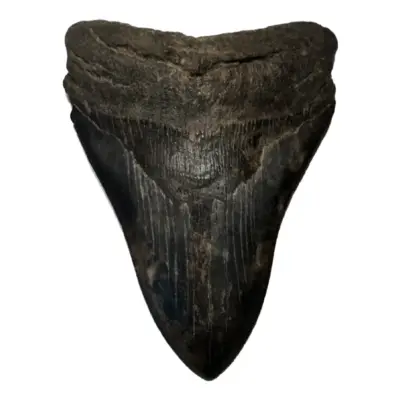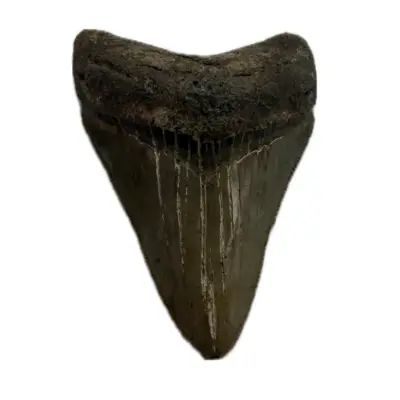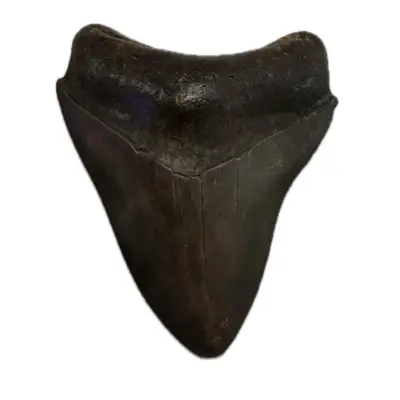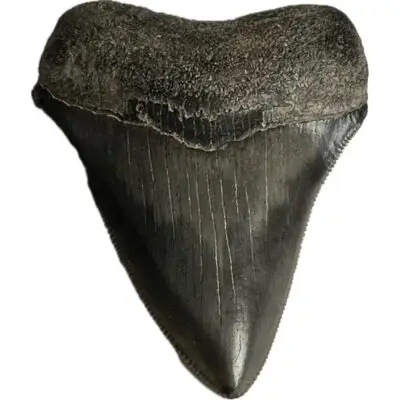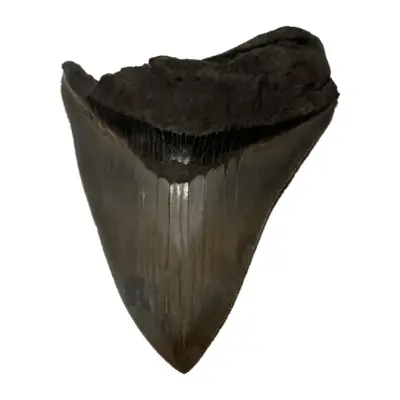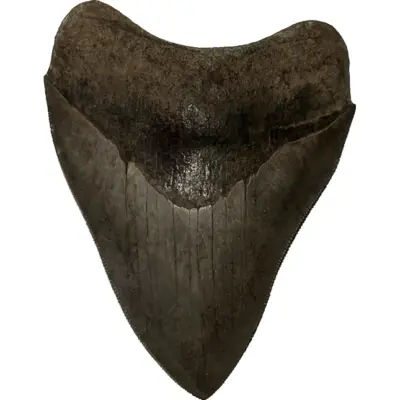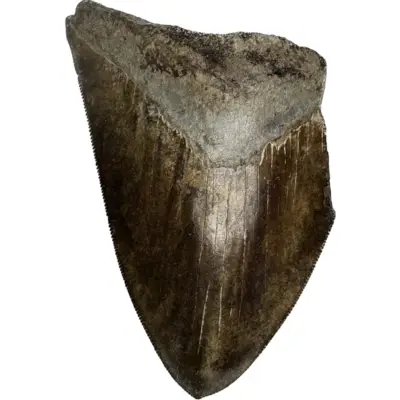Exceptional Megalodon Teeth from S. Georgia
Showing all 19 results
Megalodon shark teeth found in the St. Marys River in southern Georgia are part of a rich fossil record that hints at the area’s prehistoric marine life. These teeth, belonging to the extinct Megalodon shark, are prized by fossil enthusiasts for their size and impressive preservation.
Megalodon was a massive shark that lived approximately 23 to 3.6 million years ago, during the Miocene and Pliocene epochs. It is believed to have been one of the largest predators to ever exist, with teeth that could grow up to 7 inches in length. These teeth are characterized by their large size, triangular shape, and serrated edges, which were used for grasping and cutting prey.
The St. Marys River, which forms part of the border between Georgia and Florida, has yielded numerous Megalodon teeth over the years. The river’s sedimentary deposits contain fossils from the Miocene and Pliocene epochs, including those of Megalodon and other ancient marine creatures. Fossil hunters and collectors frequent the riverbanks, searching for these elusive treasures.
Megalodon Fun Facts: South Georgia Edition
- Is Megalodon a Real Shark?
Yes, Megalodon was a real shark that lived millions of years ago, and its existence is well-supported by fossil evidence. Officially known as Carcharocles megalodon, this prehistoric shark roamed the oceans between 23 and 3.6 million years ago. While the Megalodon is extinct today, its remains, especially fossilized teeth, provide clear evidence of its size and power. In areas like South Georgia, where ocean currents have eroded and exposed ancient seabeds, fossilized Megalodon teeth are still found, confirming the shark’s once-dominant presence in the seas. - How Truly Big Was Megalodon?
Megalodon was an extremely large shark, with estimates suggesting it could grow up to 60 feet long, though some believe it may have reached even greater sizes. To put that into perspective, modern-day great white sharks, some of the largest living sharks, only grow to about 15 to 20 feet. Megalodon’s enormous jaws, spanning over 10 feet, were filled with rows of sharp, serrated teeth capable of crushing large prey like whales. South Georgia, with its rich marine ecosystem, is a place where Megalodon would have thrived, feeding on the abundant marine life. - What Did Megalodons Eat?
As the apex predator of its time, Megalodon had a diverse diet that mainly consisted of large marine animals, including fish, sea turtles, and especially large whales. Its immense jaws and sharp teeth made it an efficient predator, perfectly suited for capturing and feeding on these large creatures. In South Georgia, fossilized Megalodon teeth have been found alongside the remains of ancient whales and marine mammals, indicating that Megalodon likely preyed on large marine animals that were abundant in the region’s waters. The availability of large prey would have supported Megalodon’s massive size and its position at the top of the food chain. - Why Are Megalodon Teeth So Valuable?
Megalodon teeth are highly valuable due to their rarity, size, and historical significance. These teeth are some of the few remnants of the Megalodon shark, offering a rare glimpse into the past and the life of one of the most powerful predators ever to roam the oceans. Fossilized Megalodon teeth found in South Georgia are particularly prized for their excellent preservation, large size, and sharp edges. Collectors, paleontologists, and fossil enthusiasts seek out these teeth because of their size and the insight they provide into the Megalodon’s behavior, diet, and dominance in ancient marine ecosystems. - What Is the Best Location to Find Megalodon Teeth?
While South Georgia may not be the first place that comes to mind when it comes to finding Megalodon teeth, it is home to a rich marine environment where fossilized remains, including Megalodon teeth, have been discovered. South Georgia Island, located in the southern Atlantic Ocean, is known for its diverse marine life and its geologically rich seabeds. Fossils from a variety of prehistoric creatures, including the Megalodon, have been uncovered along the island’s coast and surrounding waters. While places like South Carolina and Florida are more famous for large finds, South Georgia still remains an important location for fossil hunters, especially for those seeking rare and well-preserved Megalodon teeth from this unique part of the world.
Prehistoric 101 (Learn about fossils, minerals, and meteorites)
Learn about Megalodon Sharks
Megalodon Sharks of the World
The Megalodon: Smithsonian Institution





